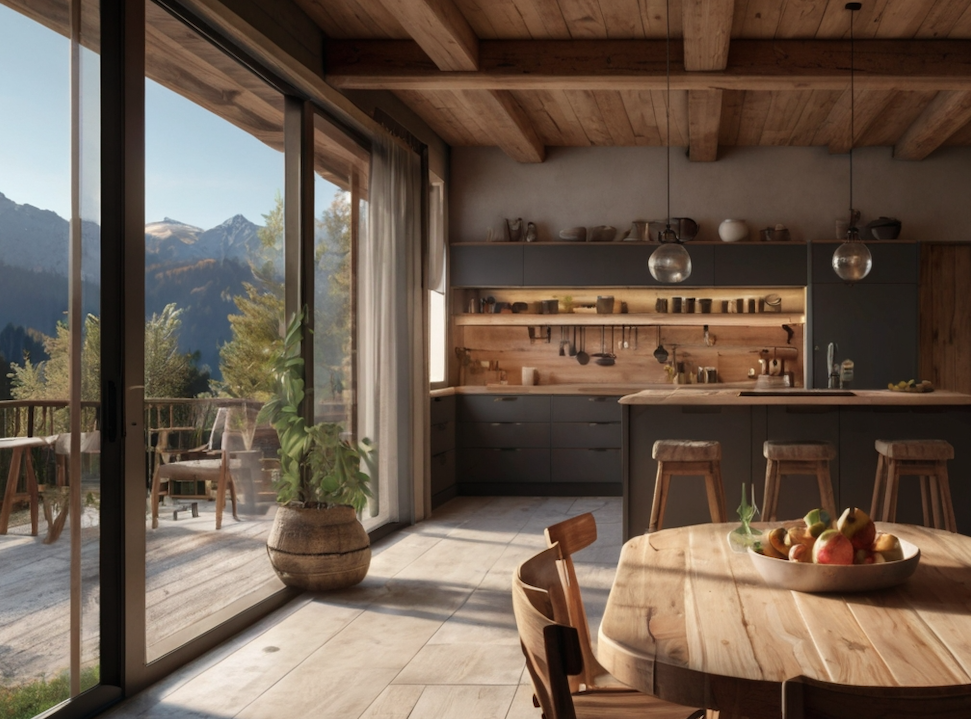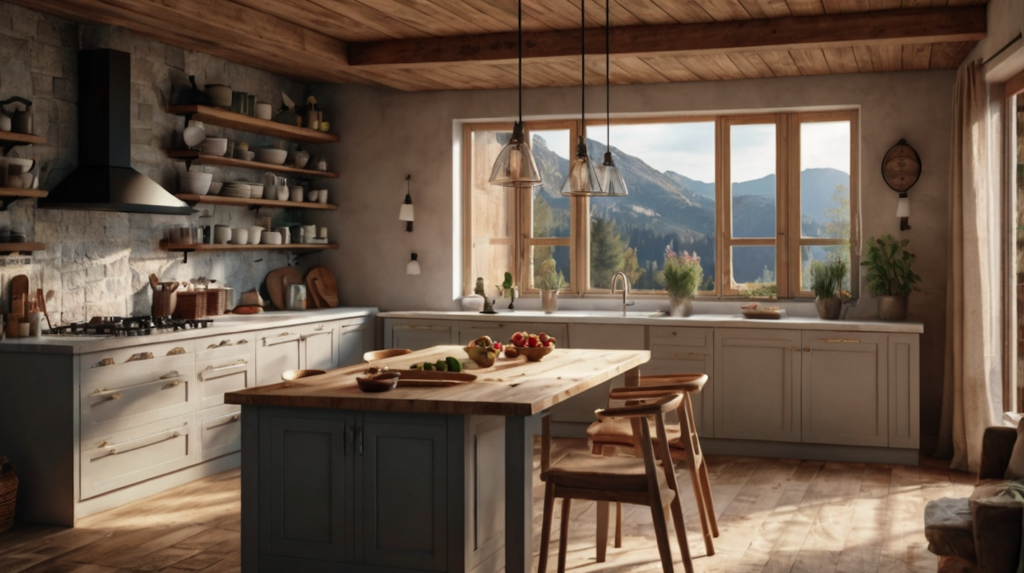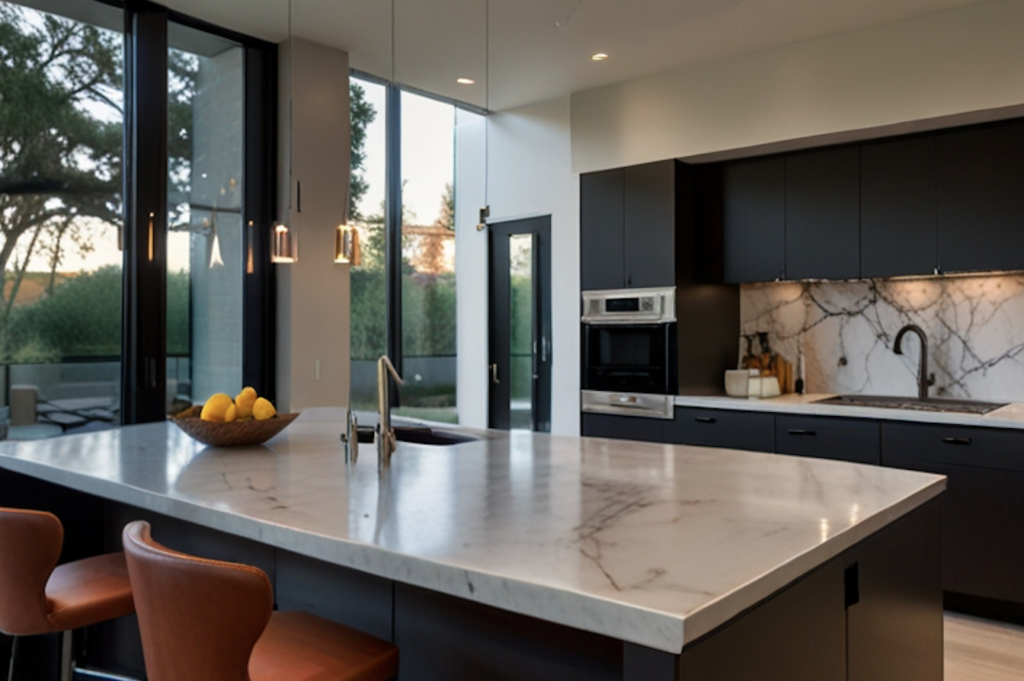Ah, the allure of a mountain home – crisp air, breathtaking vistas, and a sense of serenity unmatched in the lowlands. But for those who have ventured into the world of high-altitude kitchen design, the path can be less scenic and more akin to climbing Mount Everest. I recently met with a client, Sarah, who dreamt of a kitchen that mirrored the beauty of her mountain retreat. However, the challenges of high-altitude living quickly became apparent.
Cooking at the Top: Challenges and Considerations
One of the biggest hurdles in high-altitude kitchens is the impact of reduced air pressure. At higher elevations, water boils at a lower temperature, affecting cooking times and appliance performance. For Sarah, this meant rethinking her reliance on boiling for pasta and vegetables.
Pro Tip 1: Embrace the pressure cooker! A pressure cooker uses steam to cook food at a higher pressure and temperature, significantly reducing cooking times even at high altitudes. Additionally, adjusting cook times according to manufacturer recommendations is crucial. For baking, convection ovens are your friend – improved air circulation ensures even cooking without burning edges.
Another often-overlooked challenge is ventilation. The decreased air pressure at high altitudes can affect the efficiency of exhaust fans. Imagine Sarah’s frustration if her dream kitchen ended up perpetually smoky!
Pro Tip 2: Don’t settle for standard ventilation. Invest in high-powered exhaust fans specifically designed for high-altitude use. Additionally, increased make-up air ventilation is essential. This ensures a constant flow of fresh air enters the kitchen to replace the air being removed by the exhaust fan.

High and Dry: Material Considerations
Beyond appliance concerns, dry mountain air presents its own set of challenges. This dryness can cause wood cabinetry to shrink and crack, and certain countertop materials to become brittle. We needed to find materials that could withstand the elements, just like Sarah’s mountain home!
Pro Tip 3: When it comes to cabinetry, properly acclimated and kiln-dried wood is essential. This ensures the wood is stable and less prone to warping or cracking in dry mountain air. For countertops, moisture-resistant materials like quartz or granite are ideal choices.
Design Solutions for Breathtaking Kitchens
Here, we’ll transform these challenges into opportunities to create distinctive and functional kitchens for our mountain-dwelling clients.
Material Marvels: Building to Withstand the Elements
When designing a kitchen for high elevations, material selection becomes paramount. We need to prioritize durability and moisture resistance to combat the challenges of dry air and potential temperature fluctuations.
For the eco-conscious client, sustainable material options like bamboo or recycled wood products can be explored, provided they are properly manufactured for high-altitude environments. Always consult with reputable manufacturers to ensure their products are suitable for mountain living.
- Appliance Altitude Adjustment: A Breath of Fresh Air (Literally!)
High altitude can wreak havoc on appliances, particularly gas ranges. The reduced air pressure affects the air-to-fuel mixture, leading to incomplete combustion and potential safety hazards.
Pro Tip 4: Ensure professional installation of all gas appliances to guarantee proper air-to-fuel mixture adjustment for high-altitude operation. Some manufacturers offer high-altitude conversion kits for their appliances.
Double Duty Power: Consider dual-fuel ranges as an alternative. These offer the versatility of gas cooktops for rapid heating and electric ovens for consistent baking – ideal for overcoming the challenges of high-altitude cooking.
- The Power of Planning: Conquering Every Peak
The key to success in high-altitude kitchen design lies in thorough planning**. Here’s why:
- Factor in ventilation requirements from the very beginning. Specifying high-powered exhaust fans and increased make-up air ventilation during the design phase ensures proper airflow in the final kitchen.
- Don’t underestimate the importance of appliance adjustments. Consult with manufacturers to verify if conversion kits or high-altitude modifications are necessary for gas appliances. Plan for professional installation to guarantee proper operation.
- Material selection is crucial. Choose moisture-resistant cabinetry materials like kiln-dried wood and countertops like quartz or granite to withstand the dry mountain air. Explore sustainable options like bamboo or recycled wood products if properly manufactured for high-altitude use.
Pro Tip 5: Remember, consultation is key.** Collaborate with manufacturers of appliances and building materials to ensure their products are suitable for high-altitude environments. Their expertise can be invaluable in navigating the unique challenges of mountain kitchens.
Conclusion: Reaching the Summit of Kitchen Design
Designing a kitchen for a high-altitude home presents unique challenges, but also exciting opportunities. By understanding the impact of reduced air pressure and dry mountain air, we can create kitchens that are both beautiful and functional. Embrace these challenges as a chance to distinguish yourself from the competition and delight your mountain-dwelling clients with a kitchen that measures up to their breathtaking views.




